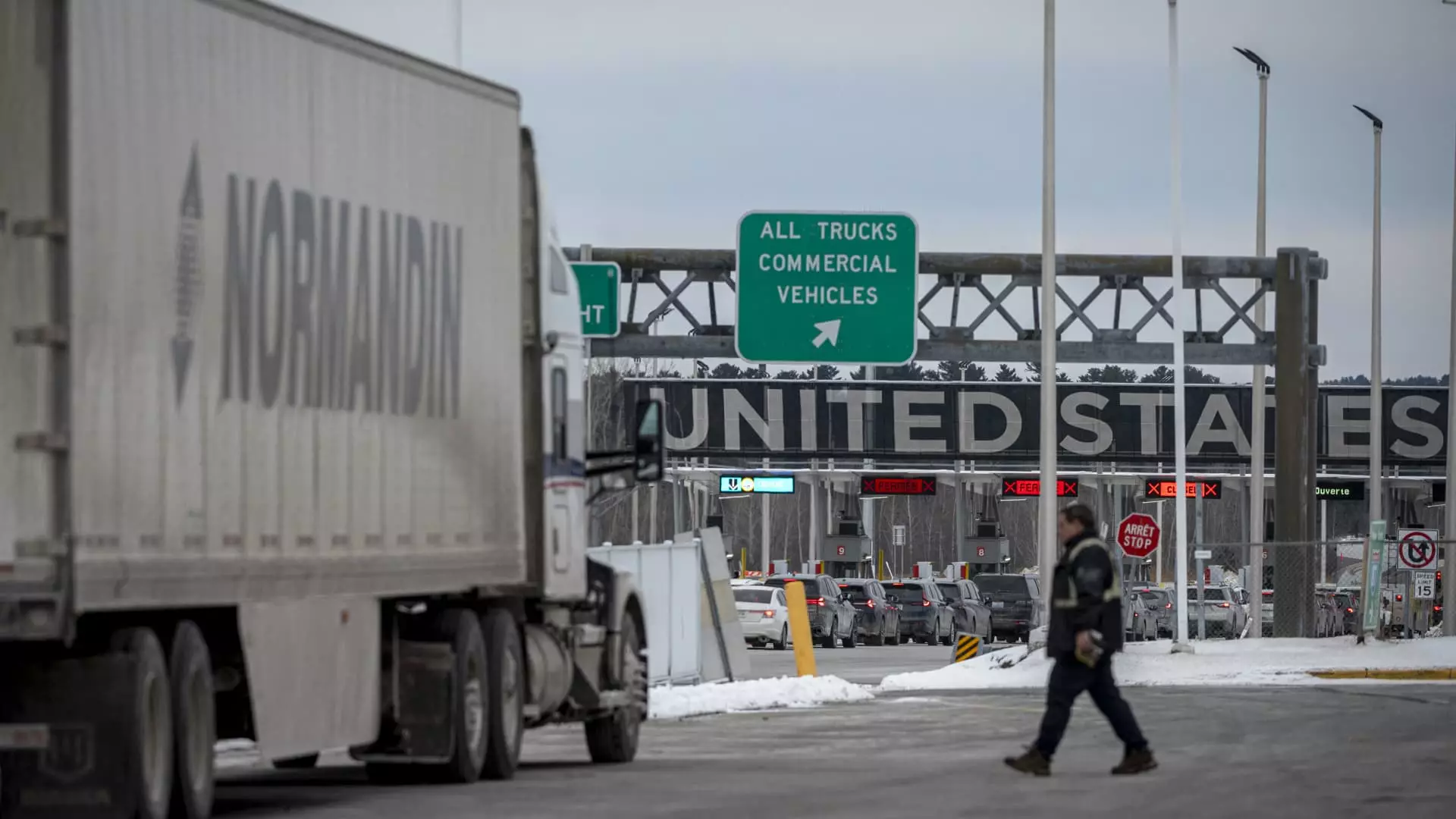The recent decision by the U.S. government to impose tariffs on several key trade partners has drawn considerable attention among economists, policymakers, and consumers alike. The tariffs, which include a hefty 25% on imports from Canada and Mexico and a 10% levy on goods from China, come at a time when consumers are already struggling with high borrowing costs. The economic fallout from these tariffs could have lasting impacts on the broader financial landscape, and many experts are voicing concerns about their potential ramifications.
Immediate Effects of Tariffs on Consumer Pricing
As the tariffs take effect, consumers can brace for an increase in prices across various sectors. Economists suggest that these tariffs are likely to elevate inflation levels, particularly since the U.S. economy has not yet stabilized at the target inflation rate set by the Federal Reserve. This upward pressure complicates monetary policy. Inflation acts as a deterrent for the Fed’s efforts to lower interest rates, as higher consumer prices can create a cycle wherein borrowing becomes more expensive.
Moreover, predictions from economists indicate that the tariffs could increase inflation by approximately 0.5 to 1 percentage point by 2026. This estimation focuses on “core” prices, excluding volatile sectors like food and energy. As inflation rises, consumers could find themselves paying more for everyday goods and services, making it even more challenging for families to manage household budgets.
The Federal Reserve’s Dilemma
With inflation climbing due to these tariffs, the Federal Reserve may have limited room to maneuver regarding interest rate policy. The Fed’s benchmark interest rate has a profound influence on borrowing costs for credit cards and loans, and if inflation remains elevated, the expectation is that interest rate cuts will be shelved. Some analysts point out that the Fed’s previously anticipated rate reductions could be jeopardized, especially if inflationary trends persist.
In light of the shifting economic context, Paul Ashworth, a prominent economist, noted that “the window for the Fed to resume cutting interest rates at any point over the next 12 to 18 months just slammed shut.” This perspective emphasizes the urgency for the Fed to navigate through this maze of fiscal challenges, as sustained high inflation could trigger an overall economic slowdown.
Complicating matters further is the uncertainty surrounding the implementation and longevity of these tariffs. President Trump’s initial aim to impose tariffs on Mexico has been paused temporarily after negotiations took place involving Mexican authorities sending troops to their southern border to address drug trafficking. Thus, while tariffs on Canada and China are in effect, the shifting political landscape means that consumers and businesses alike face an unpredictable environment.
As Susan Collins, president of the Federal Reserve Bank of Boston, articulated, “There’s a lot of uncertainty about how policies unfold.” This political oscillation adds another layer of complexity for economists attempting to forecast the long-term implications of these tariffs.
Further evaluations conducted by J.P. Morgan indicate that the economic ramifications of these tariffs may result in a decrease in U.S. GDP by 0.5 to 1 percentage point through 2026. Such estimates suggest that the negative influence on economic growth may outstrip the inflationary pressures these tariffs may introduce. This raises the question of whether, given this projected economic drag, the Fed might eventually find itself in a position wherein rate cuts become necessary despite inflation concerns.
The overall consensus among economists hints that these tariffs could result in a dual-edged sword for the U.S. economy. While the expectation of increased inflation looms large, the adverse effects on consumer spending and economic growth remain significant.
As this situation continues to unfold, consumers and businesses alike must remain vigilant and adaptable to the changing economic landscape shaped by these tariffs. With inflationary pressures on the rise and uncertainty in trade relationships, the road ahead appears rocky. Overall, the potential for these tariffs to not only constrain consumer purchasing power but also to complicate the Fed’s approach to interest rates poses serious concerns for the economic future of the United States. As we move forward, gauging the long-term consequences of these tariffs will be critical in understanding the broader implications for the American economy and its consumers.


Leave a Reply